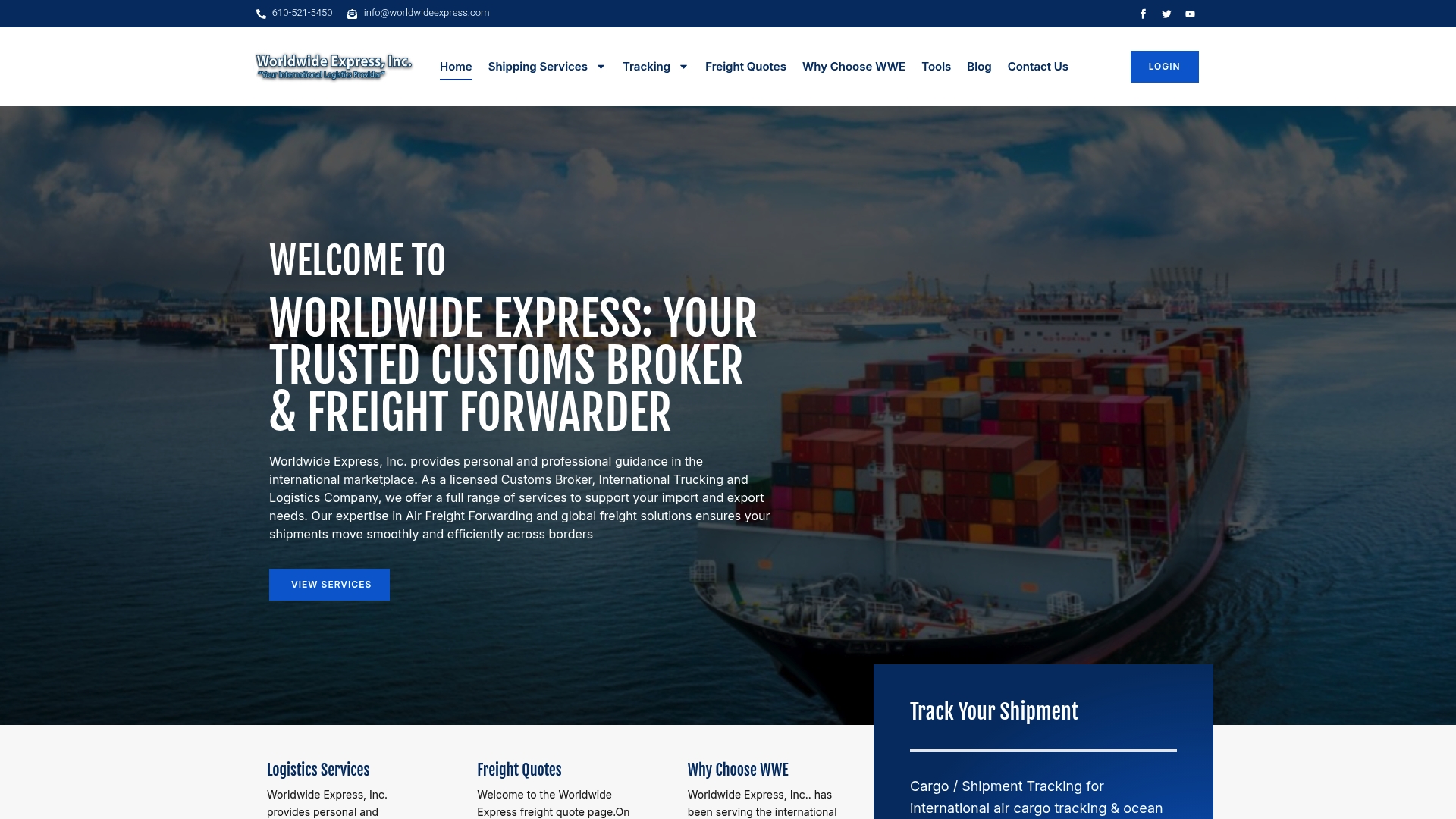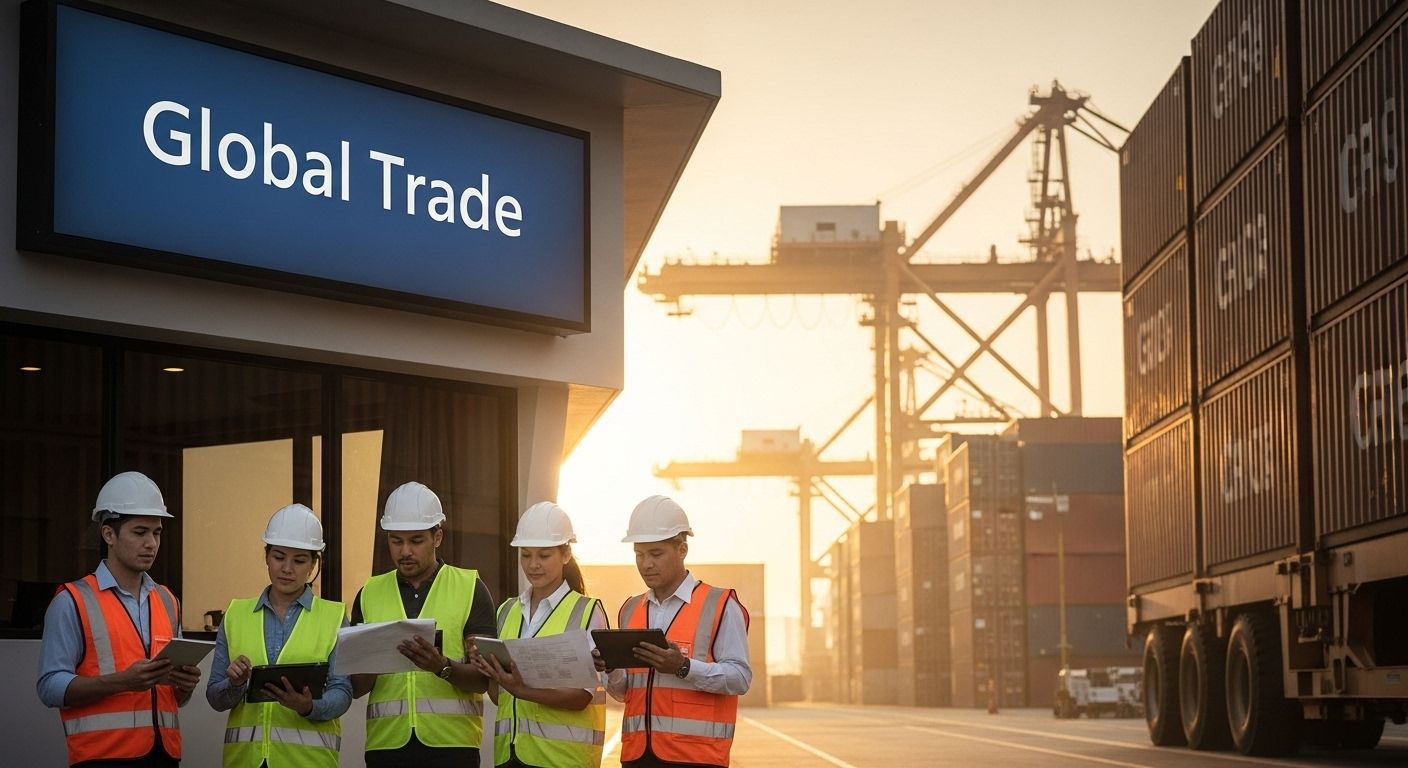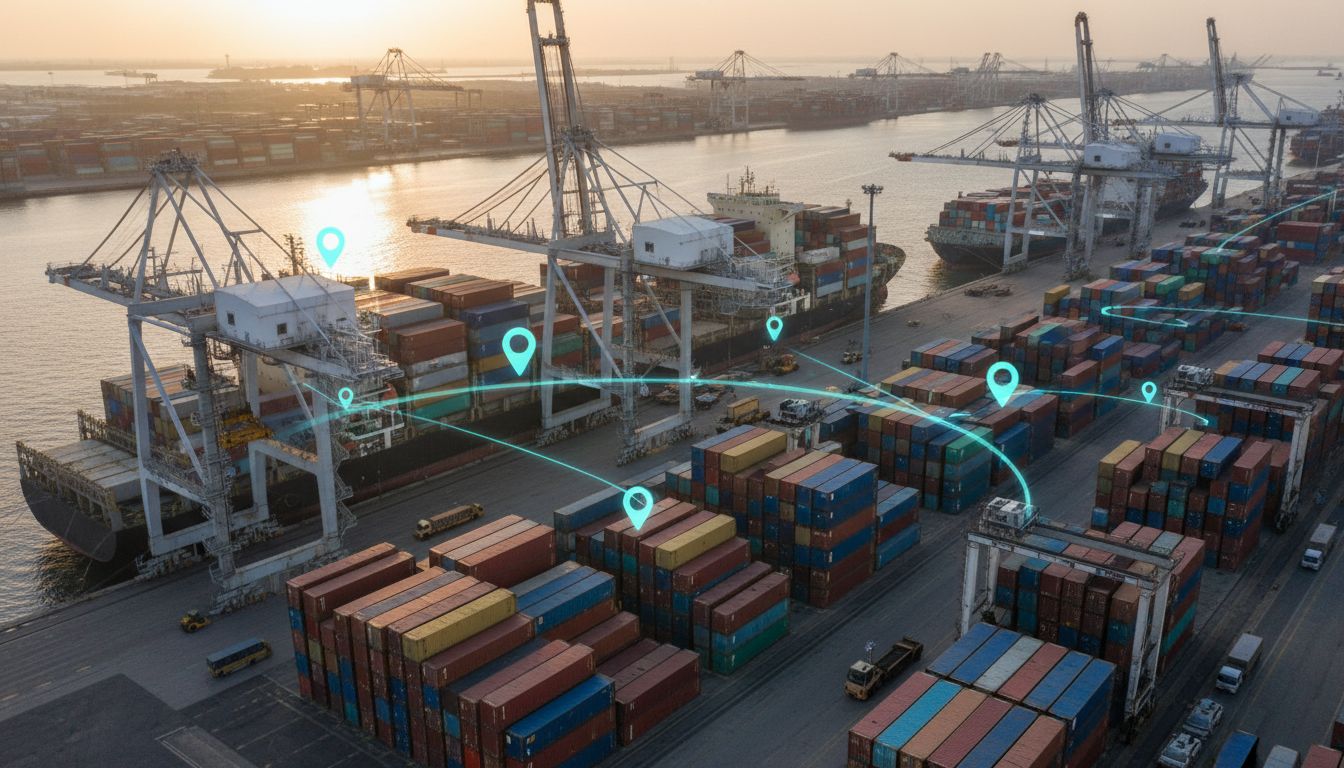Container shipping rates decide how much it costs to move goods in containers across the world and they are the heartbeat of international trade. But check this out. In early 2024, global spot rates for shipping containers from Shanghai to Europe skyrocketed by 256 percent almost overnight due to Red Sea conflicts. Most people think these numbers just reflect simple transportation costs. The real story is that shipping rates act like a pulse for global economics and geopolitical tension, impacting everything from inflation to the price tag on your next order.
Table of Contents
- What Are Container Shipping Rates And Why They Matter?
- Key Factors Influencing Container Shipping Rates
- How Container Shipping Rates Are Determined
- The Impact Of Global Events On Container Shipping Rates
- Future Trends In Container Shipping Rates
Quick Summary
| Takeaway | Explanation |
|---|---|
| Container shipping rates are critical for businesses | They significantly influence costs for importers and exporters, impacting pricing strategies and logistics decisions. |
| Rates fluctuate based on multiple factors | Changes in global trade volumes, fuel prices, and geopolitical tensions greatly affect shipping costs. |
| Geopolitical events can cause drastic rate changes | Conflicts and trade embargoes can lead to rapid price increases, affecting shipping logistics and budgets. |
| Technology is reshaping shipping economics | Innovations like AI and blockchain are improving efficiency and potentially lowering future shipping costs. |
| Sustainability efforts will impact pricing | Increasing investments in cleaner technologies may lead to short-term rate hikes as the industry adapts. |
What are Container Shipping Rates and Why They Matter?
Container shipping rates represent the fundamental pricing mechanism for transporting standardized shipping containers across global maritime routes. These rates determine the cost of moving goods internationally, serving as a critical financial indicator for importers, exporters, and logistics professionals.
Understanding the Basics of Container Shipping Rates
Container shipping rates are complex pricing structures that reflect multiple economic factors. Discover more about freight logistics that influence these dynamic pricing mechanisms. The rates typically include several core components:
![]()
- Base ocean freight cost
- Fuel surcharges
- Terminal handling charges
- Documentation fees
- Customs clearance expenses
According to the Bureau of Transportation Statistics, these rates fluctuate based on global trade volumes, fuel prices, shipping demand, and geopolitical conditions. A 40-foot container’s shipping cost can vary dramatically depending on origin, destination, and current market dynamics.
Economic Significance of Shipping Rates
Container shipping rates are more than just transportation expenses. They serve as a critical economic barometer, reflecting global trade health and economic interconnectedness. The St. Louis Federal Reserve research highlights that shipping price variations can significantly impact import price inflation, demonstrating their broader economic implications.
Businesses rely on these rates to make strategic decisions about international trade, inventory management, and supply chain optimization. Sudden rate increases can dramatically alter product pricing, profit margins, and competitive positioning in global markets.
Understanding container shipping rates requires recognizing them as a complex, dynamic system that goes far beyond simple transportation costs. They represent a nuanced economic indicator that connects manufacturers, traders, and consumers across international boundaries.
Key Factors Influencing Container Shipping Rates
Container shipping rates are dynamic and complex, influenced by an intricate web of global economic, environmental, and logistical factors. Understanding these variables helps businesses anticipate and manage transportation costs more effectively.
Global Supply and Demand Dynamics
Supply chain disruptions and international trade patterns significantly impact container shipping rates. Learn more about freight management strategies that help navigate these challenges. Key influencing elements include:
- Global economic growth rates
- International trade volumes
- Seasonal merchandise demand
- Manufacturing output in major trading regions
- Geopolitical trade tensions
According to the Federal Maritime Commission, consumer demand surges and capacity constraints can dramatically shift shipping rate structures, creating substantial price volatility.
Operational and Environmental Cost Factors
Shipping companies continuously adjust rates based on operational expenses and regulatory requirements. Fuel costs represent a significant portion of these expenses, with marine diesel and alternative fuel prices directly impacting shipping rates. Environmental regulations, such as the International Maritime Organization’s sulfur emission standards, compel carriers to invest in cleaner technologies, which further influences pricing.
Additional operational factors include vessel maintenance, crew expenses, port handling charges, and technological investments in more efficient shipping infrastructure. These complex cost structures mean that container shipping rates reflect far more than simple transportation expenses.
Understanding these multifaceted influences allows businesses to develop more strategic approaches to international shipping, anticipating potential rate fluctuations and making informed logistical decisions.
How Container Shipping Rates Are Determined
Container shipping rates emerge from a complex interplay of market forces, contractual negotiations, and strategic business decisions. Understanding these mechanisms reveals the intricate process behind international maritime pricing.
Contractual Pricing Mechanisms
Service contracts form the backbone of container shipping rate determination. Explore freight quote strategies that help businesses navigate these complex negotiations. These contracts typically involve:
- Negotiated minimum shipping volumes
- Predetermined rate schedules
- Specific service level commitments
- Duration of pricing agreement
According to the Federal Maritime Commission, these confidential agreements allow shippers and carriers to establish predictable pricing frameworks that balance mutual business interests.
Market Dynamics and Spot Rates
Beyond contractual arrangements, container shipping rates are significantly influenced by real time market conditions. Spot rates represent the current market price for immediate shipping capacity, fluctuating based on:
- Global trade volume
- Vessel availability
- Seasonal demand variations
- Geopolitical disruptions
- Port congestion levels
The interplay between long term service contracts and dynamic spot rates creates a fluid pricing environment where shipping rates can change rapidly. Carriers continuously adjust their pricing strategies to maintain profitability while meeting market demand.
Ultimately, container shipping rates reflect a sophisticated ecosystem of economic indicators, operational constraints, and strategic business negotiations that extend far beyond simple transportation costs.
This table compares the two main methods used to determine container shipping rates, providing clarity on how prices are set in the industry.
| Pricing Mechanism | Key Features | Impact on Shipping Rates |
|---|---|---|
| Service Contracts | Negotiated volumes and rates, fixed duration, confidential | Provide predictable, stable rates |
| Spot Market Rates | Real-time pricing, based on immediate supply and demand | Can fluctuate rapidly with market changes |
The Impact of Global Events on Container Shipping Rates
Global events can dramatically transform container shipping rates, creating ripple effects that reverberate through international trade networks. These disruptions demonstrate the intricate interconnectedness of global logistics and economic systems.
Geopolitical Disruptions and Trade Routes
Geopolitical tensions can instantaneously reshape shipping dynamics and pricing structures. Learn about navigating complex freight scenarios that help businesses adapt to sudden changes. Key global events impacting shipping rates include:
- Regional conflicts
- Trade embargoes
- Maritime security threats
- Diplomatic tensions
- Strategic maritime chokepoint disruptions
According to UNCTAD, recent Red Sea attacks have caused container spot rates from Shanghai to surge 256% to Europe and 162% to the U.S. West Coast, illustrating how geopolitical events can rapidly escalate shipping costs.
Pandemic and Economic Transformations
External shocks like the COVID-19 pandemic fundamentally restructured global shipping economics. Unprecedented consumer demand combined with constrained vessel capacity created extraordinary price volatility. Supply chain resilience became a critical strategic priority as businesses confronted massive logistical challenges.
Shipping companies were forced to recalibrate entire operational models, with rate adjustments reflecting complex interactions between reduced manufacturing capacities, changed consumption patterns, and limited transportation infrastructure. These transformations revealed the fragility of global trade networks and the critical importance of adaptive pricing mechanisms.
Ultimately, container shipping rates represent a dynamic ecosystem continuously reshaped by global economic, political, and environmental forces beyond traditional market mechanics.
Future Trends in Container Shipping Rates
The landscape of container shipping rates is evolving rapidly, driven by technological innovations, environmental regulations, and global economic transformations. Understanding these emerging trends will be crucial for businesses navigating international trade.
Technological Disruption and Efficiency
Digital transformation is reshaping container shipping economics. Explore advanced freight management strategies that leverage cutting-edge technologies. Key technological trends include:
- Artificial intelligence for route optimization
- Blockchain for transparent pricing mechanisms
- Advanced predictive analytics
- Real-time tracking and monitoring systems
- Automated vessel routing
According to UNCTAD, emerging technologies could potentially reduce shipping times and costs by optimizing global maritime trade networks, fundamentally altering traditional pricing models.
Sustainability and Environmental Regulations
Environmental considerations are becoming increasingly central to container shipping rate determinations. Decarbonization efforts are driving significant investments in cleaner maritime technologies, which will inevitably influence pricing structures.
Shipping companies are transitioning toward alternative fuels, investing in more efficient vessel designs, and adapting to increasingly stringent international environmental regulations. These transformations will require substantial capital investments, potentially leading to short-term rate increases as industries adapt to more sustainable operational models.
Ultimately, future container shipping rates will reflect a complex interplay between technological innovation, environmental sustainability, and global economic dynamics, demanding unprecedented agility from maritime logistics professionals.

Navigate Complex Container Shipping Rates with Trusted Expertise
Are you struggling to keep up with the constant changes in container shipping rates? With global trade facing unpredictable price swings, intense supply chain disruptions, and complicated documentation requirements, it is easy to feel overwhelmed. Delays, sudden fees, and unclear logistics can put your business at risk. By relying on Worldwide Express, you gain a partner who understands the importance of accurate rate forecasting, smooth customs clearance, and strong compliance support. Our team specializes in guiding importers and exporters through the exact issues discussed in Understanding Container Shipping Rates for Global Trade. We help you master costs, avoid costly surprises, and maintain your competitive edge worldwide.

Ready to take control of your international transportation expenses? Partner with Worldwide Express and discover how our tailored logistics solutions can streamline your shipping operations, improve efficiency, and bring you peace of mind. Visit our site now to request a quote and see how we can simplify your global supply chain.
Frequently Asked Questions
What factors influence container shipping rates?
The key factors influencing container shipping rates include global supply and demand dynamics, operational and environmental cost factors, and geopolitical events that affect trade routes and shipping capacity.
How are container shipping rates determined?
Container shipping rates are determined through a combination of contractual pricing mechanisms, such as service contracts with predetermined rates, and real-time market dynamics that influence spot rates based on current demand and supply conditions.
Why do container shipping rates fluctuate?
Container shipping rates fluctuate due to variations in global trade volumes, fuel prices, seasonal demand, geopolitical tensions, and unexpected events like pandemics that disrupt the supply chain.
What is the impact of global events on container shipping rates?
Global events, such as geopolitical disruptions and economic crises, can dramatically alter container shipping rates by causing immediate shifts in demand, affecting shipping routes, and creating logistical challenges that lead to increased transportation costs.






